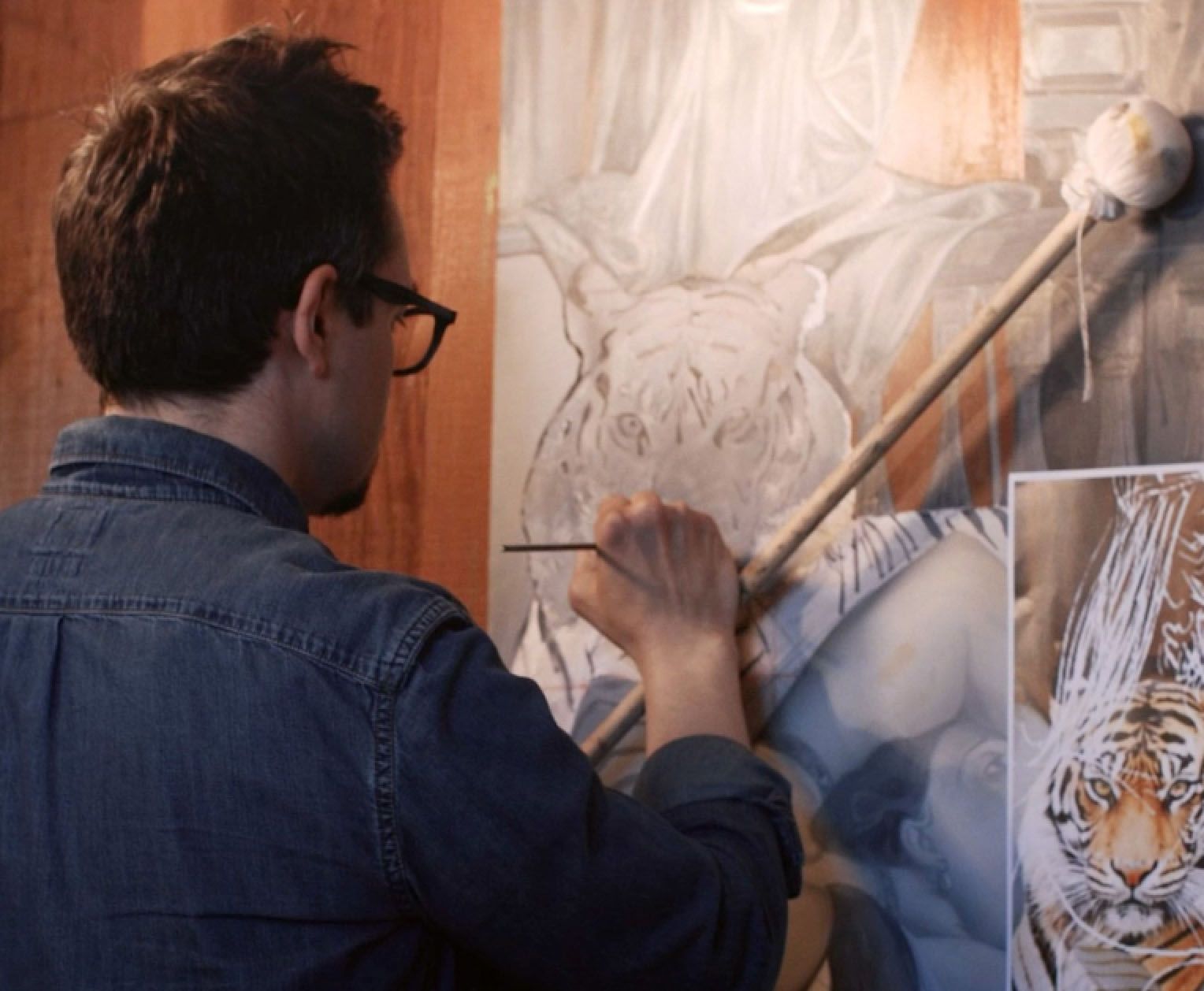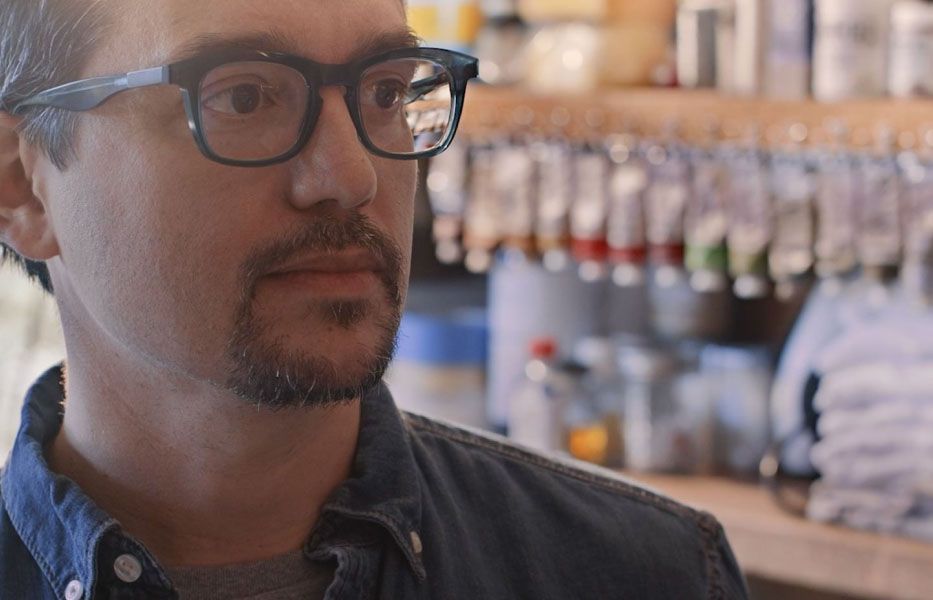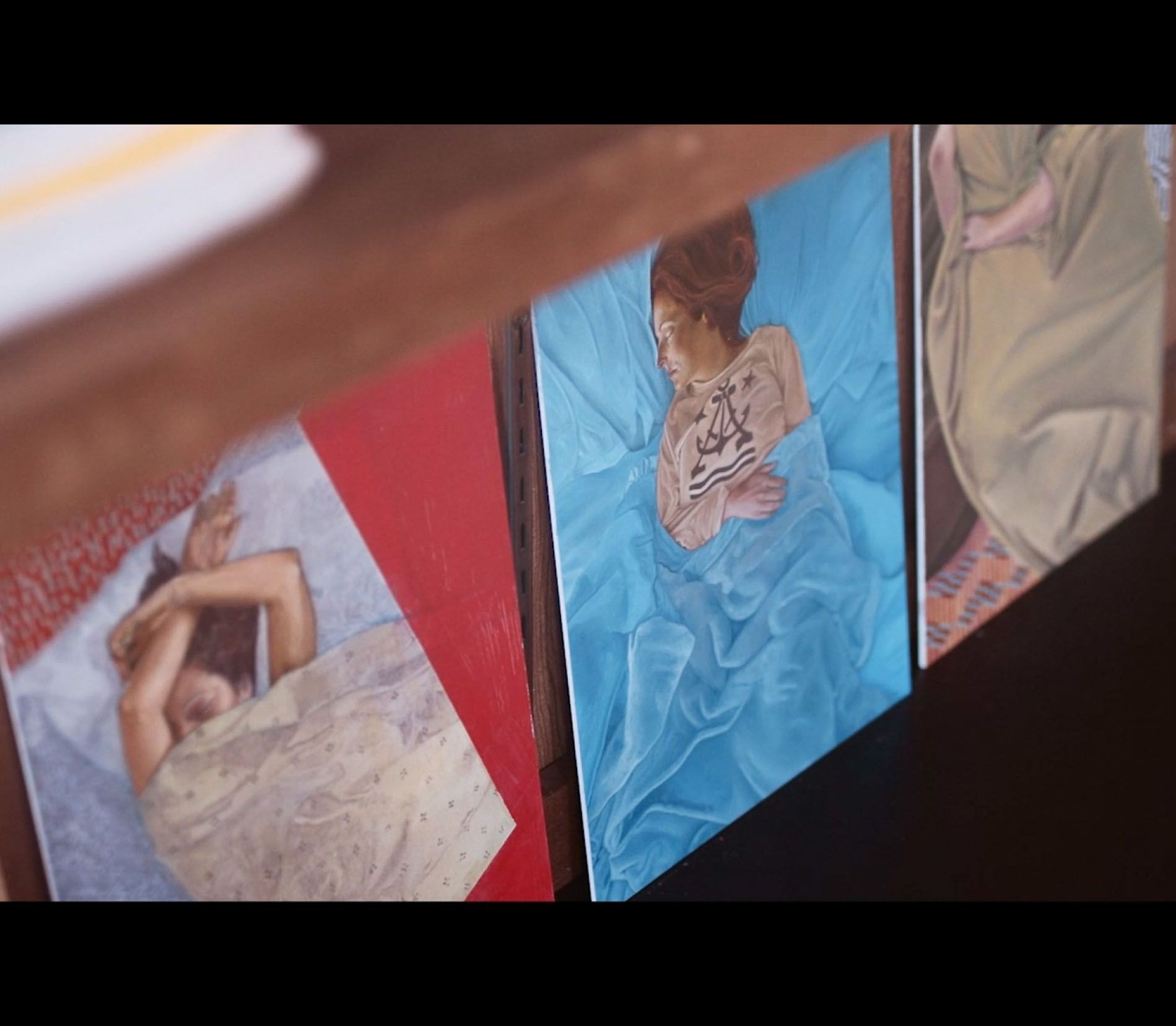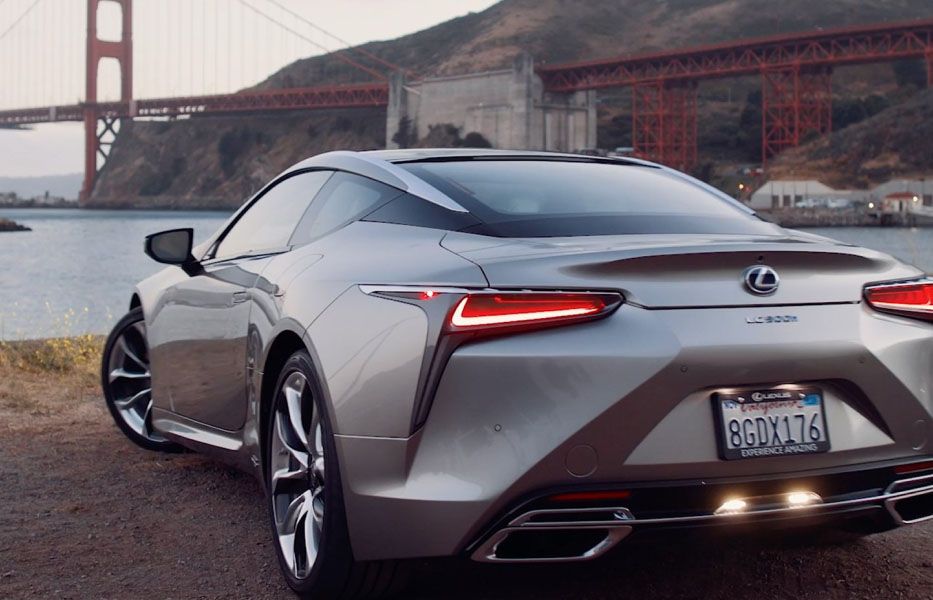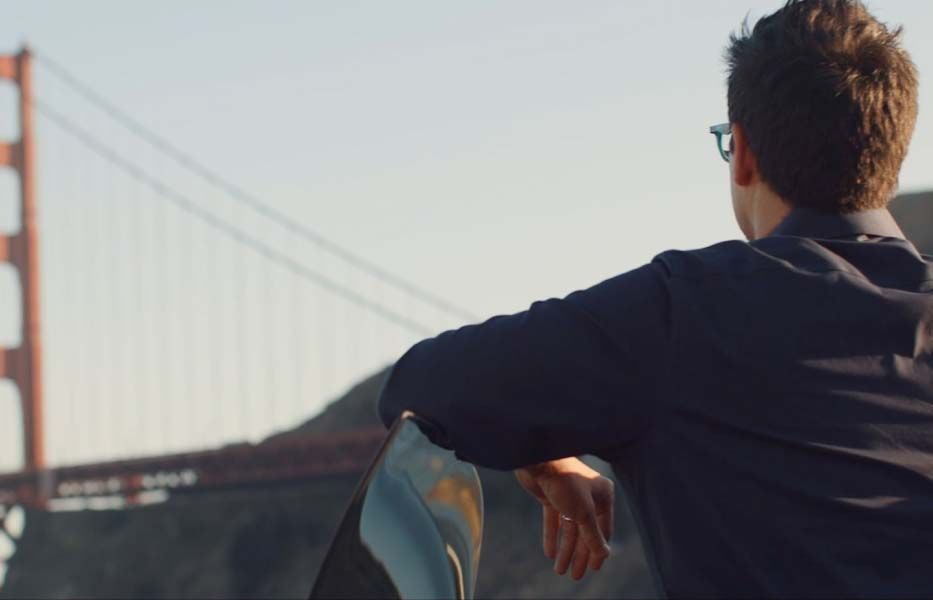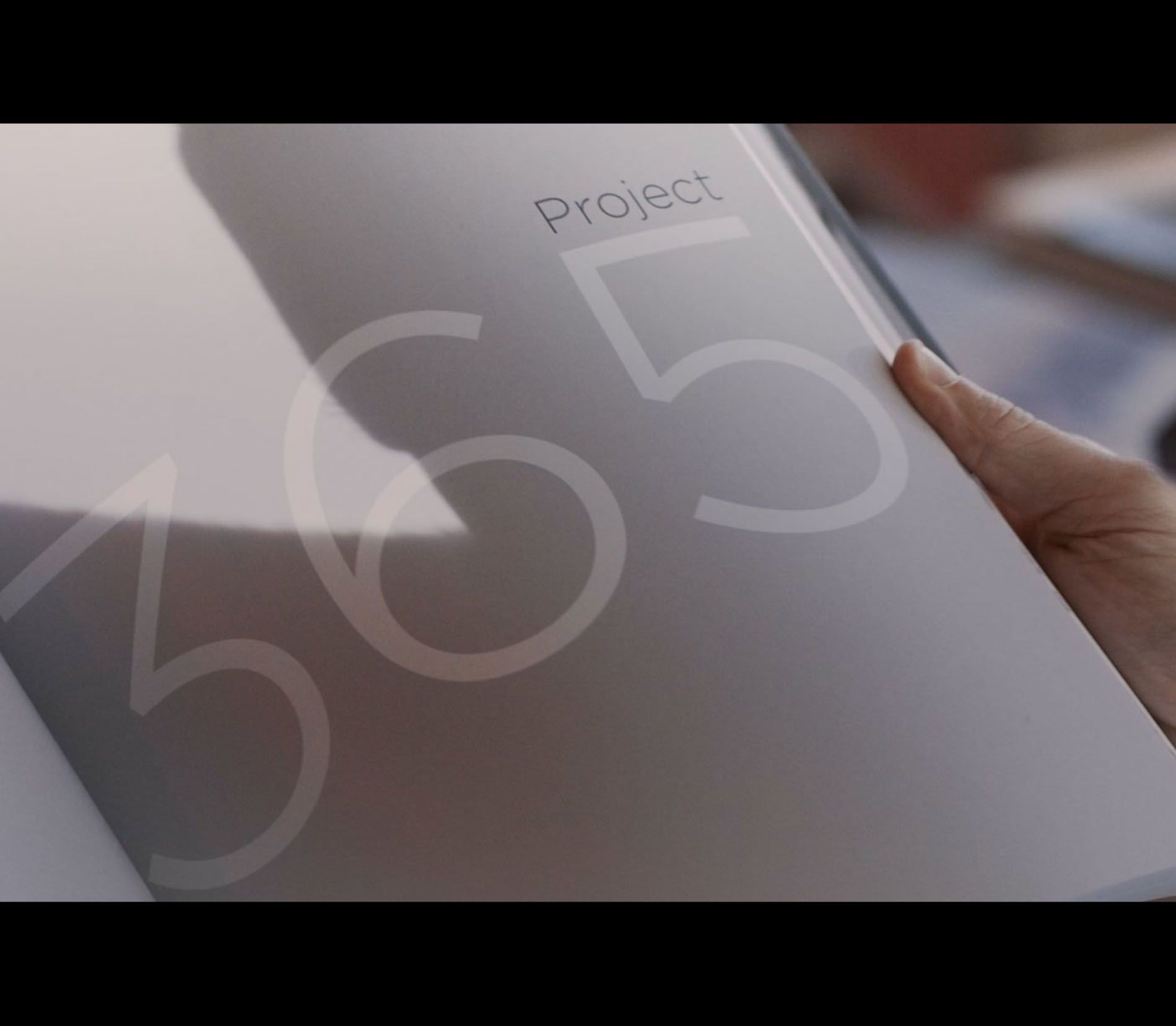Pulling into his sloping driveway, Serritella parks the Sonic Titanium-colored LC before ascending the cantilevered staircase to his home’s hidden courtyard. Designed by American architect Joseph Allen Stein, a protégé of Richard Neutra, whose designs were celebrated for marrying the structure to the landscape, this 1951 house does just that, with large rectangular windows framing the surrounding oak and acacia trees. “My former art mentor, Don Kunz used to remind me that beauty is what you surround yourself with, and what you surround yourself with becomes what you create.”
Fittingly, this notion of beauty extends inside where art takes center stage. Serritella’s own paintings, including a wry self-portrait sit alongside a considered collection that includes a signed Rauschenberg lithograph and James Rosenquist leaning against the wall. “I think art should make you stop and think, not just be something you pass by,” says Serritella, who divides his time between his own artistic pursuits and a role as effects supervisor at Pixar Animation Studios.

